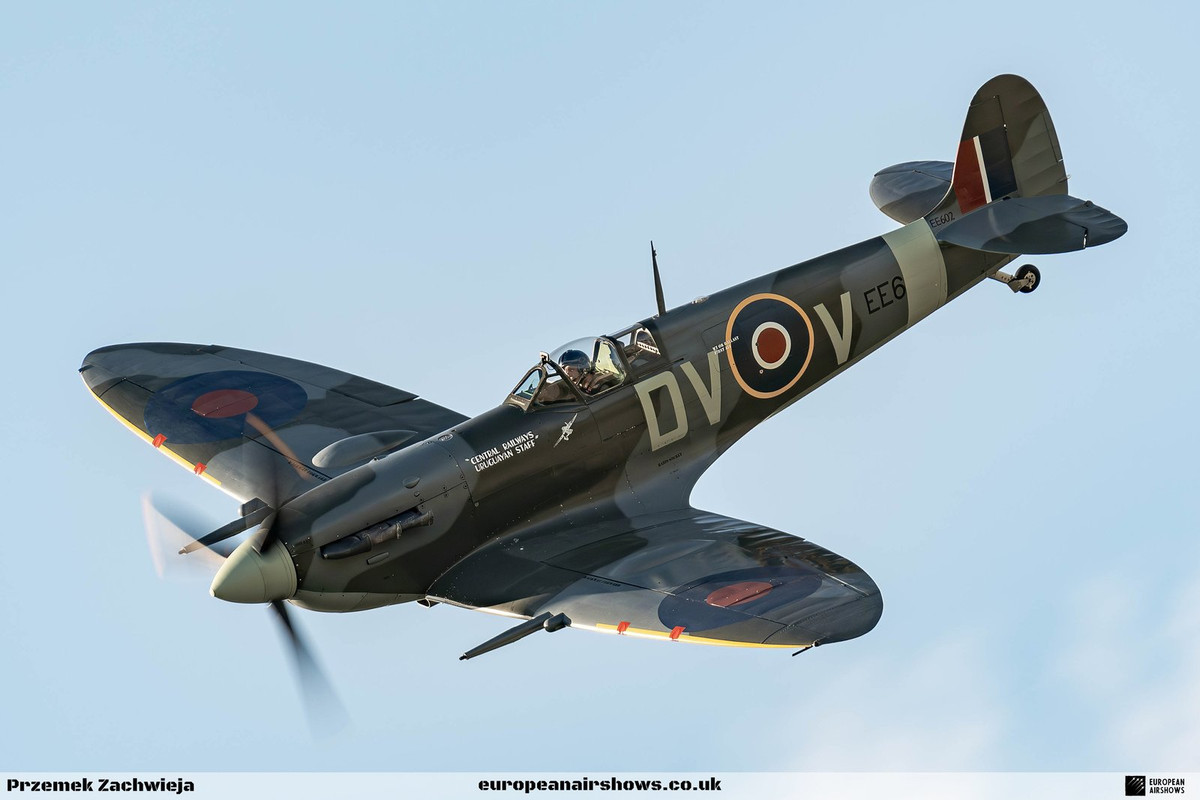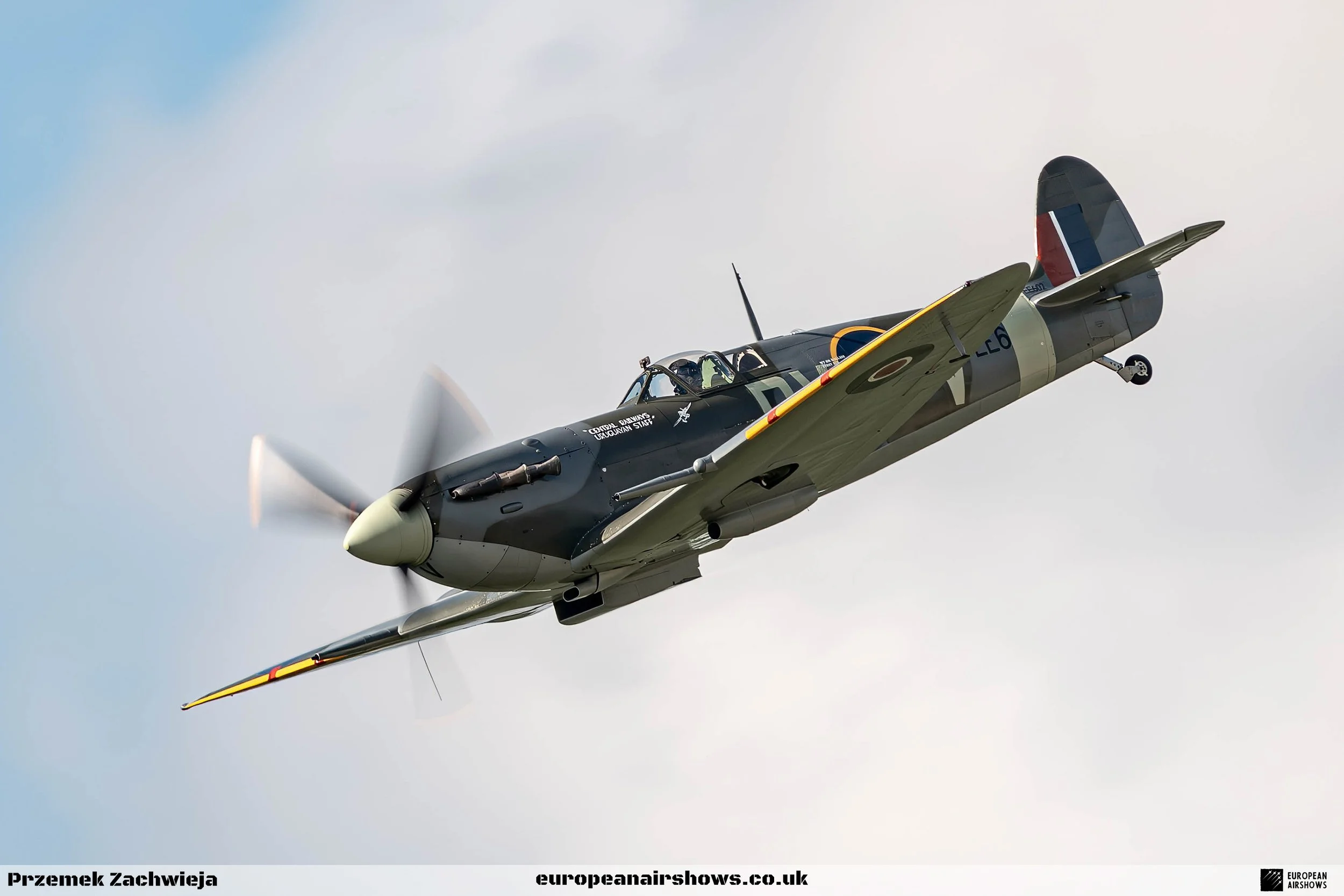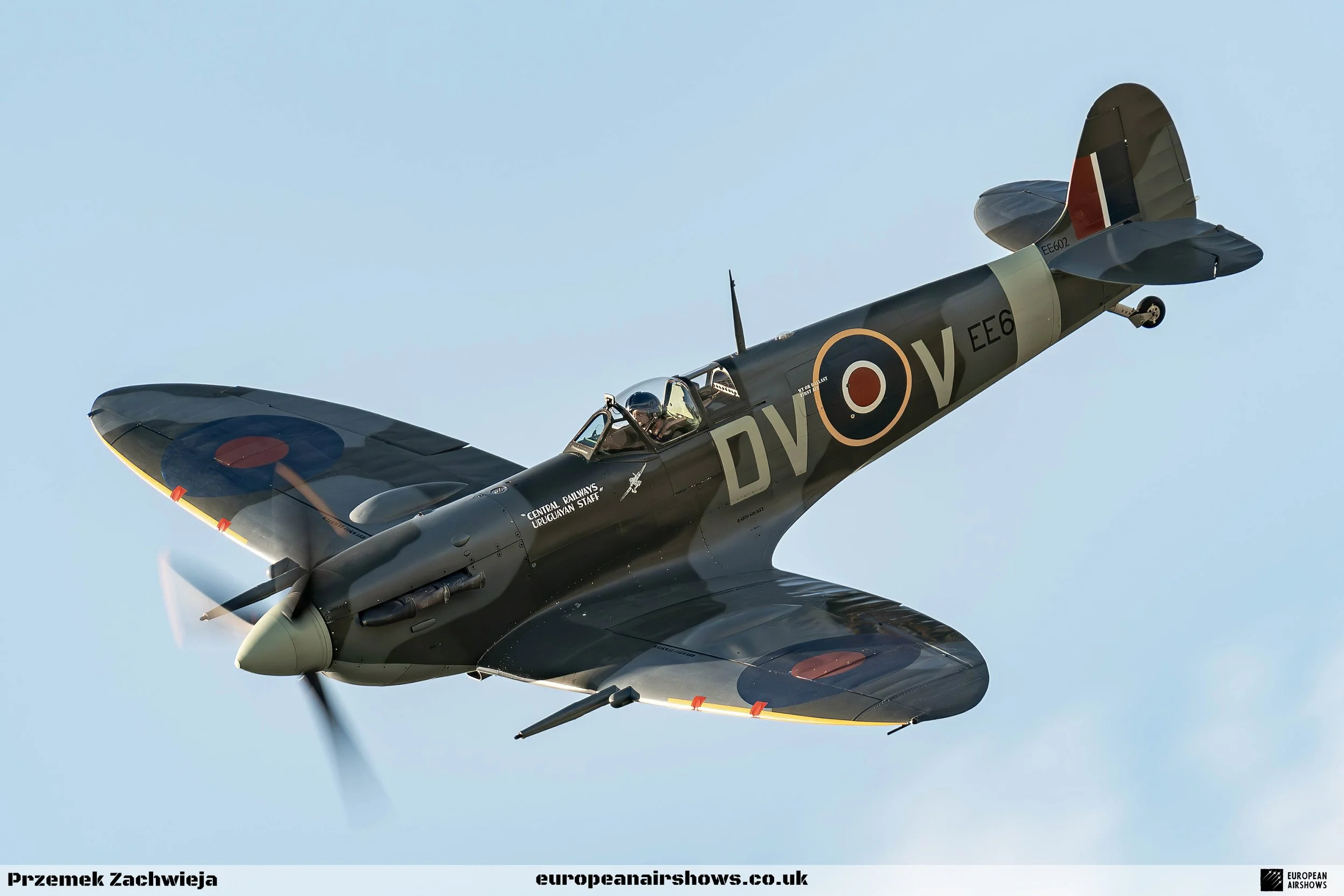
Supermarine Spitfire Mk Vc G-IBSY
About the Spitfire
The Supermarine Spitfire first took to the air in the mid‑1930s and quickly became an icon of British aviation. Designed by Reginald Mitchell for the Royal Air Force, its distinctive elliptical wing and innovative stressed‑skin construction enabled exceptional speed and maneuverability. From early prototypes to successive “marks” that introduced improved armament, stronger structures, and more powerful Rolls‑Royce Merlin engines (and later Griffon engines), the Spitfire was continuously refined to meet the changing demands of aerial combat during World War II. Its elegant design and high performance made it a symbol of determination and hope during Britain’s darkest hours.
Throughout its operational history, the Spitfire evolved from a sleek, single‑seat interceptor into a multifaceted workhorse. Early versions faced significant production challenges with rapid modifications—ranging from upgrades in cockpit design to re‑armament changes driven by combat experience. The aircraft played a decisive role in the Battle of Britain and later proved adaptable as a fighter‑bomber, a high‑altitude interceptor, and even as a carrier‑based fighter (in the Seafire variant). By the end of the war, more than 20,000 Spitfires of various marks had been built, a testament to its versatility and the industry-wide efforts that supported its production.
Even as World War II drew to a close, the Spitfire’s development continued with further modifications to improve high‑altitude performance, extend range with increased fuel capacity, and enhance pilot visibility. The transition from Merlin to Griffon engines ushered in a new era of performance that allowed the aircraft to remain competitive against evolving enemy designs. Long celebrated after the war as a masterpiece of aeronautical engineering, the Spitfire is now an enduring symbol of British ingenuity, frequently appearing in museums and airshows, where it continues to captivate aviation enthusiasts around the world.
Specifications
Crew
1
Length
29 ft 9 in (9.12 m)
Wingspan
36 ft 8 in (11.23 m)
Height
12 ft 4 in (3.8 m)
Max Speed
370 mph (597 km/h, 322 kn)
Range
459 mi (740 km, 399 nmi)
Service Ceiling
35,000 ft (10,668 m)
Rate of climb
3,877 ft/min (19.7 m/s)
Mk Vc Variant
The Spitfire Mk Vc emerged as an important evolution of the earlier Mk V series, incorporating several significant refinements that set it apart from its predecessors. In response to operational experiences and evolving tactical requirements during the war, engineers focused on improving the aircraft’s internal structure and overall durability. The Mk Vc featured a re‐stressed and strengthened fuselage as well as a new windscreen design that provided better visibility and enhanced pilot protection. One of its most notable innovations was the introduction of the universal or Type C wing, which allowed for flexible armament configurations. This wing design included larger, bulged fairings in its upper surfaces to accommodate ammunition feed motors, although these fairings were later streamlined when fewer cannon were carried.
In addition to its improved airframe, the Mk Vc incorporated upgrades to its cooling and protection systems. A deeper radiator fairing was fitted under the starboard wing, while a larger, more efficiently shaped oil cooler was installed on the port side. These changes, combined with additional armor plating to safeguard the pilot and protect ammunition boxes in the wing, greatly enhanced the aircraft’s resilience in combat. A particularly significant modification was its adaptation for ground-attack roles: one of the first Mk Vcs, operating out of Malta, was modified to carry bombs under each wing. This capability underscored the variant’s dual role in air superiority and fighter-bomber operations, enabling it to carry out precision strikes without sacrificing its high-performance credentials.
Operationally, the Mk Vc proved itself as a versatile and effective combat aircraft in several theaters of World War II. Its universal wing design enabled pilots to tailor the armament configuration to mission requirements, whether engaging enemy fighters or delivering bombs accurately during ground-attack missions. Although the Mk Vc was eventually succeeded in some roles by later marks such as the Mk IX, its combination of structural reinforcements, refined aerodynamics, and flexible armament options ensured that it played a crucial role in sustaining Allied air superiority. Today, the Spitfire Mk Vc is remembered as a pivotal step in the continuous evolution of one of history’s most famous fighter aircraft.
Did You Know?
- The destruction of Supermarine’s Itchen and Woolston factories by enemy bombing led to production being shifted to numerous “shadow factories”—with Castle Bromwich becoming the main hub for Spitfire manufacturing.
- Early Spitfires were famous for their elegant, elliptical wing design, chosen not only for its low induced drag but also for its aesthetic appeal—a design feature that helped to capture the public’s imagination.
- The Spitfire Mk IX was actually developed as a “stopgap” measure in response to the Focke‐Wulf Fw 190 threat and was produced from converted Mk Vc airframes before later high‐altitude models appeared.
- Some Spitfire variants were adapted for photo reconnaissance. For example, the PR Mk XIX became the definitive reconnaissance version with increased fuel capacity and specialized camera installations.
- Engine changes sometimes required more than simply swapping powerplants—the installation of the Griffon engine, for instance, necessitated modifications to the cowling, tail, and undercarriage to cope with its different thrust line and increased weight.
Test Your Knowledge
1. Which factory became the main production site for Spitfires after the original Itchen and Woolston plants were destroyed?
Spitfire Mk Vc G-IBSY
EE602 is a Supermarine Spitfire Mk.Vc with a colorful history that reads like an adventure story from World War II. Built on 11 September 1942 by Westland at their Yeovil, Somerset facility under contract number B124305/40, this particular Spitfire came equipped with the innovative universal “C” wing configuration. This design allowed for a variety of armament options—a choice between eight machine guns, four 20mm cannons, or a mix of four .303 machine guns and two 20mm cannons. EE602 sported a combination of both machine guns and cannons, and under its Rolls Royce Merlin 46 engine, it produced 1,415 bhp at 3,000 rpm, with a boost of +16 lb/in² at 14,000 feet.
EE602’s illustrious career began with 66 Squadron, the second Spitfire squadron to come into existence and a notable participant in the Battle of Britain. The aircraft later moved to 129 Squadron, later known as ‘Mysore’ Squadron—a nod to the large sums raised by the Indian Government through War Bonds, as some squadrons were named after Indian provinces to celebrate this contribution. Its final active service was with 453 Squadron of the Royal Australian Air Force (RAAF).
Throughout its service, EE602 flew on over 100 missions. One of its most memorable assignments occurred when it escorted the famous Flying Fortress “Memphis Belle” back to the English coast after her iconic 25th mission with 129 Squadron. Although the aircraft was eventually taken off charge following damage sustained during a taxing incident, its legacy was already well secured.
In an interesting twist of wartime support, individuals, companies, clubs, or counties had the opportunity to “buy” a Spitfire by raising £5,000. The Uruguayan railways, overseen at the time by British expatriates, successfully collected the funds, and the aircraft proudly displayed “Central Railways Uruguayan Staff” on its side. EE602 was formally presented to 129 Squadron on 31 May 1943, marking another chapter in its storied life.
After suffering the toll of combat, EE602 underwent a painstaking restoration to bring it back to concourse standard—a process that took more than three years. Today, the Spitfire flies once again in the iconic markings it wore while serving with 129 Squadron, delighting enthusiasts and historians alike with its restored luster and celebrated history.







